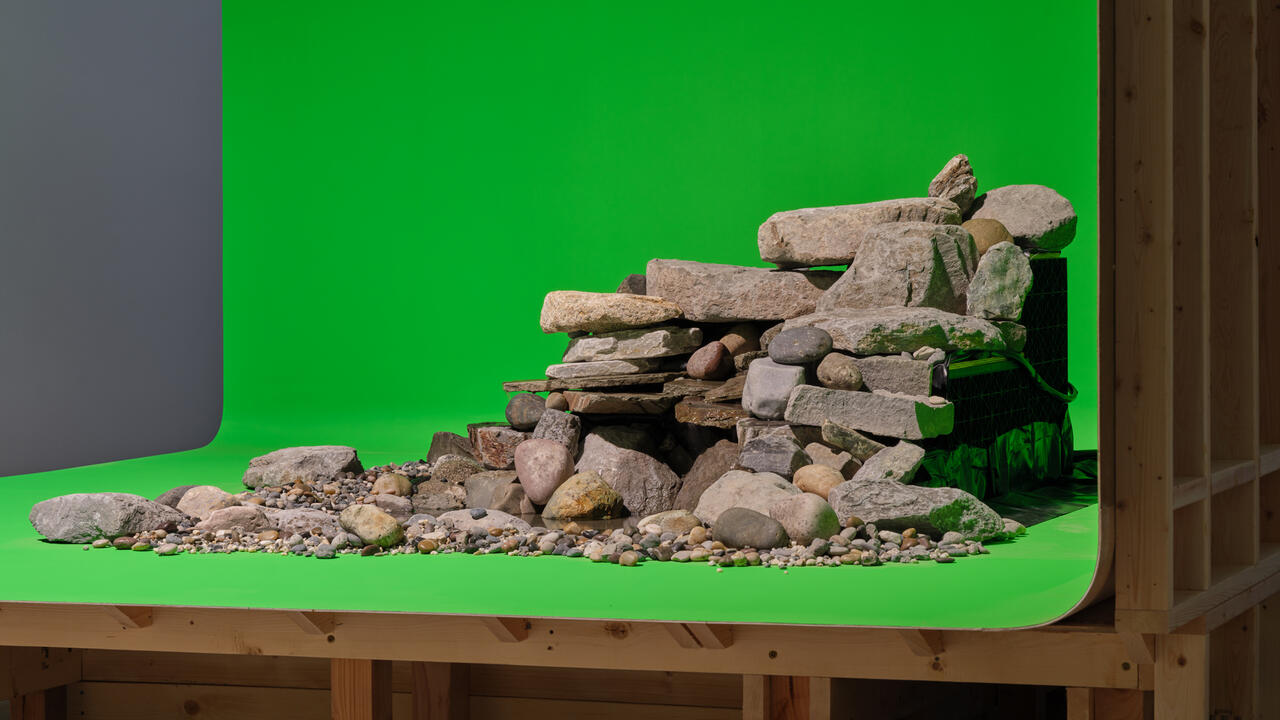Scott McFarland
Vancouver Art Gallery, Canada
Vancouver Art Gallery, Canada

Given that it’s one metre high, four metres wide and panoramic, Scott McFarland’s photograph Huntington Botanical Garden, San Marino, California (2005) should possess a compelling sense of depth. While a spray of green plants certainly creates a metre or two of visual space in the right foreground, something odd – and oddly familiar – blocks our way. Large succulents and cacti ranged across the mid-ground throw us off balance with their startling one-dimensionality (the agaves look like they’re made of paper), and everything beyond that appears flat – like a billboard, a backdrop, a Potemkin Village of the desert.
Or like a painting by Gustave Caillebotte, Gustave Courbet and Éduoard Manet — any early Modernist icon where deliberately mismatched composition, scale and perspective pit the obvious fact of the canvas’ flatness against conventional illusions of depth and volume. Such historical associations pepper the commentary about McFarland’s pictures, pegged to his invocations of John Constable (in a series of Hampstead Heath cloud studies) and Constable’s German contemporary Johann Erdmann Hummel (in a reprise of the latter’s painting of the Lustgarten in Berlin).
But as was evident from this substantial display of McFarland’s work from the last seven years (augmented by an intriguing cluster of pictures he selected from the Vancouver Art Gallery’s collection), his historical interest exceeds such one-to-one correspondences. Similarly, the effects enabled by his technique – shooting with a 4x5 inch camera, then scanning the images to layer and manipulate them – outstrips clichés about challenging our preconceptions regarding photography’s realism (which dot the catalogue’s essays).
For starters, McFarland understands that photography’s relationship with realism emerged during the 20th century. Commenting on the 19th century’s freer sense of this correlation, he said: ‘The idea of combining multiple exposures is not new to photography. It goes back as far as Gustave Le Gray’s seascapes in the 1850s.’ In part, McFarland meant that concern over (or delight in) digital technology’s loosening of photography’s attachment to truth misses the point that this bond was never especially tight. Le Gray, in the 1850s, made seascapes by combining the ocean from one photo with the sky from another – a level of manipulation was tame beside that of his contemporary Oscar Gustave Rejlander, whose Two Ways of Life (1857) combined images from 30 negatives.
So what happens in pictures that highlight McFarland’s use of multiple negatives, such as Orchard View with the Effects of the Seasons (2003–6), which shows dormant trees alongside greenery in full flower, or Stables on Dr. Young’s Property, 3226 W. 51st, Vancouver (2005), in which a young woman stands in two places simultaneously, attending two horses? To say that McFarland has a go (at the viewer, at photography, at truth) strikes me as too easy, too dismissive of the effort involved and the results achieved. His use of multiple exposures to construct these works matters no more – and no less – than a painter’s use of myriad colours to make a painting.
Not that I don’t think McFarland comments on photography. His interest in, perhaps even lament for, the decline of the celluloid tradition comes through clearly in the dilapidated facades depicted in Former Photo Lab, Key Colour, Vancouver (2009) and Quality Photo Lab, 1300 Cahuenga Blvd. Los Angeles (2008). However, the frame of his commentary encompasses more than the interplay between digital and film-based techniques – as his choices from the VAG’s collection demonstrate. Photographs from 1845 by William Henry Fox Talbot and from the 1970s by Rodney Graham and Stephen Shore hang beside, among other things, a late lithograph by Paul Cézanne and winter scenes painted in oil by Isaak Ouwater (from the late 18th century) and Salomon van Ruysdael from 1645. Though schematic, this sweep plainly indicates a view of photography’s history as continuous with that of painting, rather than merely importantly connected to it (by the shared legacy of the camera obscura, for instance).
The closer McFarland hews to this position, the better he gets. I’m thinking especially of the ‘Boathouse’ series — more germane are associated images like Bench (2003), Corner (2004) and Driftwood (2006), with their muted tones and modest sizes. As understated as their titles, these well-composed, anti-spectacular details of an aging structure draw deeply and productively from other legacies standing behind McFarland — still lives of the everyday à la Jean-Baptiste-Siméon Chardin and Aleksandr Rodchenko. As with many of McFarland’s works, the strength here comes from the telling specifics: how they heighten pictorial interest while underscoring the embeddedness of subject and medium in histories beyond the frame.






















